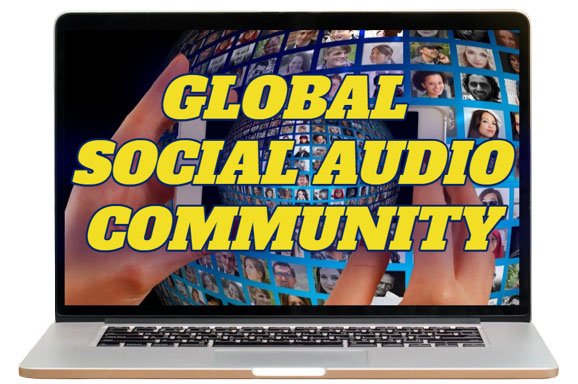7 SOCIAL VIDEO TRENDS DEFINITELY WORTH EXPLORING
A Guest Blog Post By Jay Egger

Any company looking to connect with a broader audience and increase engagement among their existing customers needs to delve deeply into the world of social video.
That’s because social video generates 1200 percent more shares than text and images combined.
Video generates more leads, more sales, and sticks in people’s brains longer than text.
Basically, the internet is becoming all about video, and social video in particular.
A social video is a specific kind of video content, tailored for the social media age.
It’s a short, targeted piece that is meant to be shared around networks like Facebook, Instagram, and Twitter—and it doesn’t reek of marketing or advertising.
It’s a story, or artistic endeavor, that just so happens to build up feelings of goodwill towards your brand, or give you an excuse to link to other forms of content or pages on your site.
Achieving that equilibrium of “marketing, but not marketing” is tough, and figuring out how to give your video traction on social networks is even tougher.
In order to create the best social video content you can, explore these trends in the space and see if you can better tailor your videos for the internet of today and tomorrow.
(1) Optimize Your Social Video For Different Channels
Social video is not one size fits all. What works on Facebook may not work as well on Twitter, or on Instagram, for a couple of reasons.
One of the reasons for that is length (which we’ll talk more about below).
As of this writing, Instagram videos max out at 60 seconds.
Twitter and Facebook videos allow you to tell longer stories.
Another is audience.
Your followers on Twitter and LinkedIn may be very different from those on Facebook and Instagram.
Each social video needs to be targeted towards the audience you’re trying to reach.
… and those audiences may be in different demographics depending on the platform they prefer.
Considering cutting or editing videos in different formats and styles, or creating different content altogether, for different platforms.
(2) Use Channels Both Big & Small
It’s tempting to throw all your weight behind a really good video made specifically for Facebook and leave it at that.
This is the wrong attitude.
That’s because Facebook is actually paring down the amount of brand content it shows users in favor of more content from family and friends, and smaller networks like Instagram and Twitter are showing increased investment.
Don’t put all your eggs in one basket, even if that basket is a monster like Facebook or even YouTube.
Changes in algorithms and directions for social networks can mean renewed life or a quick death for your video.
(3) Live Videos Are The Future - Just Do Them Right
Many networks are promoting their new live video functions, from Instagram Live videos to Facebook Watch to Periscope and lots of options in between.
For good reason:
80 percent of users polled by LiveStream said they’d rather watch a live video than read a blog.
Broadcasting a live video is easy and takes less time than creating something scripted or written, so why not go for it?
Provide customers with behind-the-scenes looks, company events - whatever you’re up to, really.
The trick is to come across as authentic and real in your live videos.
Scripted bits are best saved for regular posts.
Live videos aren’t about making things shareable or perfect, but approachable and raw.
(4) Pack Your Social Videos With Guests
Guest bloggers, vloggers, reviewers, critics, whatever—the crucial word here is “guest.”
One of the best ways to keep your social video content stream rolling is to invite guests to your channels and let them create videos for you.
The Whole30 brand is particularly good at this - letting guest chefs and nutritionists run their feeds for a week, giving tutorials and going through recipes step-by-step.
You give extra shine to your guests, and open yourself up to entirely new audiences.
(5) Go Shorter. Shorter. Even Shorter
It’s tempting to want to tell an epic story in your social videos.
But don’t, at least in terms of length.
Most social videos are under two minutes.
And for some platforms, the ideal length is even shorter — half a minute for Instagram, 45 seconds or so for Twitter.
The sad reality is that the human attention span is shrinking (or maybe we just have more to distract us than ever before?) and you’ll need to cut down your videos as much as you can to get your message across in time.
(6) Try Going Mute
Sound is an important part of most video content.
Which is a shame, because that can sometimes leave out users who are deaf, or put off users who are using social media but can’t turn the volume up.
Try using storytelling techniques that don’t require audio.
Not only will you endear yourselves to a larger audience, but you may find that the restriction actually makes you more creative.
(At the very least, be inclusive and use closed captioning so all users can enjoy your content.)
(7) Get Weird With Augmented Reality
Filters, effects, and all kinds of virtual reality advances are all the rage across a bunch of platforms.
Snapchat started the craze, but now you can look like a dog or a ghost or a grandma, and add crazy A/V effects to all your videos.
As augmented reality and virtual reality become more commonplace, expect to see video content that takes advantage of these easy-to-use (but hard-to-master) tools.
Get your practice in now and find new, fun, exciting ways to connect to your fans.

7 SOCIAL VIDEO TRENDS DEFINITELY WORTH EXPLORING
Meet Jay Egger

Jay Egger is a digital marketing strategist for Fit Small Business, who has helped build up the review section with his experience in writing, public relations and SEO.
ADDITIONAL RESOURCES
TWITTER VIDEO MARKETING CASE STUDY
@ChrisStrub #Strub100
@SheenaAlexandra @BeSeenTV2020
“TWITTER VIDEO MARKETING 101”
Amazing Case Study!!
((Please Retweet & Share)) @ChrisStrub#Strub100 @Brand24 #Top100DigitalMarketers2018 @SheenaAlexandra@BeSeenTV2020#VideoMarketing#InfluencerMarketingcc @GaryVee @MichaelHyatt @LilachBullock @MelonieDodaro pic.twitter.com/AF8IRf2knW
— Keith Keller ???? (@KeithKeller) April 10, 2018
#85. @KeithKeller , congrats on being named to @brand24 ‘s list of “Top 100 Digital Marketers of 2018.”
I’m reaching out to all 100 to ask what your best advice for a young digital marketer would be. Check this thread for more info.
Tx in advance for your reply! #Strub100 pic.twitter.com/kQ1cejLrUg
— Chris Strub (@ChrisStrub) April 5, 2018






















